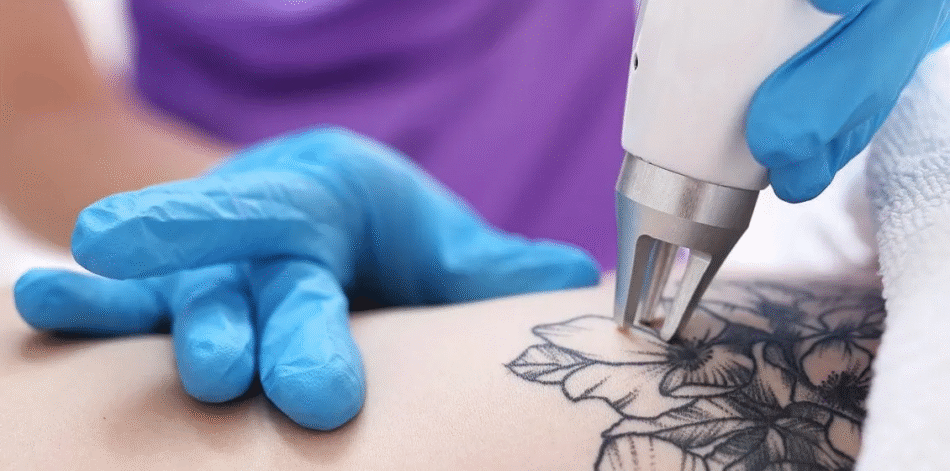Tattoos can be a beautiful form of self-expression, but sometimes life changes, and so do our feelings about that ink. Whether it’s a faded design from your younger days or a reminder of a past relationship, many people turn to laser tattoo removal to start fresh. This popular procedure has advanced significantly in recent years, Tattoo Removal Treatment offering safer and more effective ways to erase unwanted tattoos. In this complete overview, we’ll dive into how laser tattoo removal works, breaking down the science, process, and what to expect. If you’re curious about tattoo ink removal or considering laser treatment for tattoos, read on to get the full picture.
What is Laser Tattoo Removal?
Laser tattoo removal is a non-invasive method designed to break down tattoo pigments embedded in the skin. Unlike older techniques that involved scraping or cutting the skin, modern laser treatments target the ink particles directly without damaging surrounding tissue as much. This approach has become the gold standard for tattoo fading and complete erasure.
The key appeal lies in its precision. Lasers can selectively shatter ink while leaving the skin’s surface relatively intact. It’s not an overnight fix—most people need multiple sessions—but it’s a reliable option for those seeking to remove or lighten tattoos for cover-ups. Understanding the basics of this tattoo removal process helps set realistic expectations and eases any concerns about safety.
The Science Behind Laser Tattoo Removal
At its core, laser tattoo removal relies on photothermolysis, a process where light energy is converted into heat to destroy specific targets. When a tattoo is inked, pigment particles are deposited into the dermis layer of the skin, where they’re too large for the body’s immune system to clear naturally.
Lasers emit short pulses of intense light that pass through the skin and get absorbed by the tattoo ink. This absorption causes the ink particles to heat up rapidly and shatter into tiny fragments. Over time, the body’s lymphatic system flushes these smaller pieces away, gradually fading the tattoo. Different ink colors absorb light wavelengths differently, which is why advanced lasers are crucial for effective results.
Types of Lasers Used in Tattoo Removal
Not all lasers are created equal when it comes to breaking down tattoo pigments. Here are the most common types:
- Q-Switched Lasers: These deliver high-energy pulses in nanoseconds, ideal for shattering ink without excessive heat buildup. They’re effective for black, blue, and green inks.
- Picosecond Lasers: Operating in even shorter picosecond bursts, these are faster and more efficient, often requiring fewer sessions. They’re great for stubborn colors like red, yellow, and orange.
- Nd:YAG Lasers: Versatile for various skin tones, these handle darker inks well and minimize risks for people with deeper complexions.
Choosing the right laser depends on the tattoo’s colors, age, and your skin type, ensuring the treatment is tailored for optimal tattoo fading.
The Step-by-Step Process of Laser Tattoo Removal
Curious about what happens during a session? The tattoo removal process is straightforward but requires preparation and patience. Here’s a breakdown:
- Initial Consultation: You’ll discuss your tattoo’s details, medical history, and goals. This helps determine the number of sessions needed.
- Preparation: The area is cleaned, and protective eyewear is provided. A topical numbing cream might be applied to reduce discomfort.
- Laser Application: The technician uses the laser to target the ink. Each pulse feels like a rubber band snap, lasting just seconds per area.
- Post-Treatment Care: The skin is cooled, and a bandage or ointment is applied to promote healing.
- Follow-Up Sessions: Spaced 6-8 weeks apart, these allow the body to eliminate fragmented ink before the next round.
Most tattoos require 6-12 sessions for full removal, depending on factors like size and ink depth. Between treatments, you’ll notice progressive fading as your body does its part.
Factors That Influence Tattoo Removal Success
Several elements can affect how well laser treatment for tattoos performs. Being aware of these helps manage expectations:
- Tattoo Age and Ink Quality: Older tattoos often fade easier since the ink has already broken down somewhat over time.
- Color and Depth: Darker inks like black respond best, while lighter or fluorescent colors may need more advanced lasers.
- Skin Type and Health: Fairer skin typically sees quicker results, but modern lasers work on all tones with proper adjustments.
- Lifestyle Factors: Smoking, sun exposure, and overall health can impact healing and ink clearance.
By considering these, you can better prepare for a successful outcome in your tattoo ink removal journey.
Potential Side Effects and Aftercare Tips
Like any procedure, laser tattoo removal comes with possible side effects, though they’re usually mild and temporary. Common ones include redness, swelling, blistering, or slight scabbing in the treated area. These typically subside within a week.
To minimize risks, follow aftercare diligently: Keep the area clean and moisturized, avoid sun exposure, and steer clear of picking at any blisters. Staying hydrated and maintaining a healthy diet supports your body’s natural healing process. If you notice unusual symptoms like infection, consult a professional promptly.
Conclusion
Laser tattoo removal offers a powerful way to reclaim your skin and move forward without the weight of unwanted ink. From the science of shattering pigments to the step-by-step sessions, this overview shows it’s a safe, effective option when done right. Remember, patience is key—results build over time, leading to clearer skin and renewed confidence. If you’re thinking about starting the tattoo removal process, research thoroughly and consult experts to ensure it aligns with your needs. With the right approach, saying goodbye to that old tattoo can be a liberating experience.









